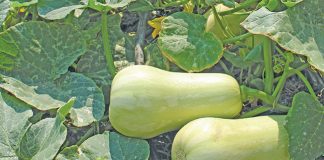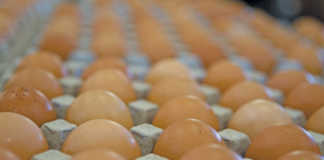
Photo: Denene Erasmus
“Angels’ share”, in brandy-speak, is the portion of brandy lost through evaporation during the time that the brandy is left to mature in small oak casks. Approximately 3% of the product is lost in this way every year, but local brandy makers gladly part with this portion, saying it is payment to the angels for working their magic in the casks.
READ:Foul play suspected in SA citrus mislabelling saga
South Africa has a long and proud history of brandy making. The spirit was first made locally in 1672 and, says one farmer who produces brandy base wine: “The whole wine industry depends on brandy.” The industry has only recently begun to emerge from a period of crisis that has seen brandy sales drop by more than 40% over the past 15 years. However, in this case, it is not the work of angels to save the local brandy industry, but of brandy producers and the South African Brandy Foundation.
Hard hit on several fronts
Ten years ago, several of the world’s major whisky manufacturers established local sales and marketing offices in South Africa and launched aggressive marketing strategies aimed at capturing a significant share of the local spirits market. At the same time the preferential excise duty for brandy was phased out and the duty on whisky was lowered. This dealt a serious blow to the price competitiveness of locally produced brandy compared with other spirits.
Yet another challenge faced the local brandy sector: the spirit’s image did nothing for a younger crowd. “Brandy was seen as an old man’s spirit and it didn’t appeal to a younger generation,” says Christelle Reade-Jahn, director of the SA Brandy Foundation. The industry started bleeding sales as more and more consumers opted for whisky, vodka and the so-called ready-to-drink (RTD) products or spirit coolers.
The volume of brandy consumed in South Africa decreased from 46 million litres per annum in 2006/2007 to around 31 million litres in 2013/2014. And the slide is not over yet. In an article on liquor consumption trends published by SA Wine Industry Information and Systems, consultant Elias Holtzkampf predicts that local brandy sales will drop another 5,2% or 1,6 million litres in the coming year.
SA brandy volumes were at their highest in 1997, when 56 million litres were sold, says Holtzkampf, but sales dropped to a low of 23 million litres due to growth of vodka and whisky.
Over the past seven years, vodka consumption has increased from 14 million litres to 18 million litres, while the demand for whisky has increased from 30 million litres to 41 million litres. The volume share of RTDs in the total alcoholic beverages market increased from 8,6% in 2006/2007 to 11% in 2013/2014, and this category’s share in total value increased from 11% to 13,6% over this period.
Brandy and the SA economy
The South African brandy industry has long played a major role in the economy, says Christelle. “It takes about five litres of wine to produce one litre of brandy. So the South African brandy industry has a symbiotic relationship with the wine industry, increasing local manufacturing value and stimulating local job creation.”
The market demand for brandy also has a significant impact on the primary wine producers in South Africa. According to the foundation, recent research by the Bureau of Economic Research indicates that for every 1% increase in South African brandy sales volumes, the price of distilling wine to this country’s grape producers increases by 0,9%.
“A growth recovery of the local brandy industry will therefore positively influence the overall profitability of South African wine producers, who are significant local employers,” says Christelle.
For every R1 million increase in the demand for brandy, economic value added in the economy will increase by R1,3 million, government tax revenue from excise and VAT will increase by R1,44 million, and 6,85 jobs will be gained. “The economic growth potential from a world-class local product such as South Africa’s brandies is substantial,” she adds.
Determined to recover
In 2011, the foundation, which represents 95% of the local brandy industry, started fighting back in earnest in a bid to save local brandy. The foundation has been the driving force behind an application submission made to Treasury to grant a rebate-differentiated excise tariff on brandy.
The application was based on the difference in raw material costs between brandy, which uses wine as a base material, and the base products used to make whisky (grain or barley) and vodka (sugar), says Christelle.
The cost of producing a brandy to South Africa’s high standards is far higher than that of spirits produced from grains or sugarcane. “Grapes are a more expensive raw material than maize or sugarcane,” she explains. “South Africa’s legal requirements for the production of brandy are superior to most other brandy-producing countries. This gives the industry the ability to produce brandies of world-class quality.”
Christelle says the industry welcomed the indication from government, in the latest national budget, that excise duty increases were under review. “It shows that government now has a greater understanding of the industry and its challenges,” she says. “This is the result of continual dialogue between the industry and various government departments around the unique challenges facing wine producers and cellars.”
The foundation has not only been working at levelling the playing field for brandy, it has also launched a number of marketing initiatives aimed at educating consumers about local brandy and repositioning brandy in such a way that it will appeal to a wider, and younger crowd.
These initiatives include: brandy master-classes; Brandy Fusion (a brandy showcase event held annually in Johannesburg and Cape Town); and the Urban Brandy Cocktail Route, which has grown to include 60 venues across the country. These venues all serve a selection of brandy cocktails prepared by a staff member trained by the foundation.
A better future
According to Christelle, brandy will never regain all the market share it has lost; the range of alcoholic spirits available in South Africa has grown too much. The industry is instead aiming for a ‘new normal’, where brandy will hold between 33% and 35% of the spirits market.
“We’re already seeing double-digit growth in sales of our premium and super premium brandies and the export market is showing healthy growth.” One of their next steps, she says, is to create and register a geographic indicator for local pot-still brandy, which will afford the brand the same Proudly South African status currently enjoyed by products such as local sparkling wine Methóde Cap Classique, and rooibos tea.
Brandy from vine to vat
A great advantage of farming with wine grapes in the Slanghoek Valley, says Stanley Louw, is that the mountain slopes provide a varied elevation at which the vineyards can be planted. In addition, there are a number of soil types, which contributes to greater variation in the grapes’ flavour characteristics.
Stanley farms with his two sons on Opstal Estate near Rawsonville. They grow 106ha of vineyards and supply about 80% of their production to Distell. The Louws are among a select group of growers who supply Distell with base wine used to distil brandy. About 15% to 20% of the grapes they produce are for base wine production, according to Stanley.
At the current producer price point for brandy base wine, they have to produce about 20t/ha grapes to earn a fair margin. Fortunately, explains Stanley, the grapes used – Chenin Blanc and Colombard – produce high yields without compromising grape quality.
“We’re very particular about how we produce the grapes and the wine that gets used as brandy base wine. We put a lot of effort into making sure that this wine is of the highest quality,” he says. The most critical production aspect is to ensure that the vineyards never suffer water stress.
“We need to produce wine with low alcohol, high acidity and a low pH. When the plant suffers water stress, the sugars in the fruit and the pH go up and the acidity goes down.” To make sure the plants never experience water stress, the Louws irrigate all the vineyards on the farm and use soil moisture data loggers to monitor moisture levels in the soil.
After being harvested in the early morning, the grapes are rapidly transported to the cellar, where they are destalked and crushed. The juice is inoculated with a yeast culture and allowed to ferment in steel tanks, at a cool temperature, on the
lees, for two weeks, by which time the base wine is ready for distillation.
The base wine should ideally have a low alcohol content of about 11%, high acidity and a low pH of around 3,3 to 3,5.
As soon as the base wine arrives at the distillery, it undergoes the first of two distillations, explains Marlene Bester, master distiller at Van Ryn’s in Stellenbosch. This is simply to remove most of the water and solids from the wine.
Base wine is distilled for eight hours in copper pot stills, and transformed into what is called low wine, with an alcohol content up to 30%. “The second distillation is where the art comes in,” says Marlene. Here the distiller has to separate the ‘heads’, ‘heart’ and ‘tail’ of the distillate.
In the second distillation, the first vapours that emerge from the still – the heads – are discarded as they contain highly volatile compounds that impart undesirable aromas. The second portion – the heart – is the soul of brandy. This is what will eventually be bottled and enjoyed. The alcohol content of the heart is between 65% and 75%.
The final vapours from the still are the tails, and these too are discarded. The heads and tails can be mixed in again with a new batch of low wine, Marlene explains. The heart is then transferred to small oak casks. By law, all South African brandies have to be matured in small oak casks with a maximum capacity of 340l for a minimum of three years. It is during maturation that the brandy obtains its distinctive amber colour.
Once aging is complete, a brandy master blends the pot-still brandies from various casks into the master blend. This may be bottled and sold as pot-still brandy, or used as a component in blended and vintage brandies.
For more information phone the SA Brandy Foundation on 021 880 1686 or email [email protected].













